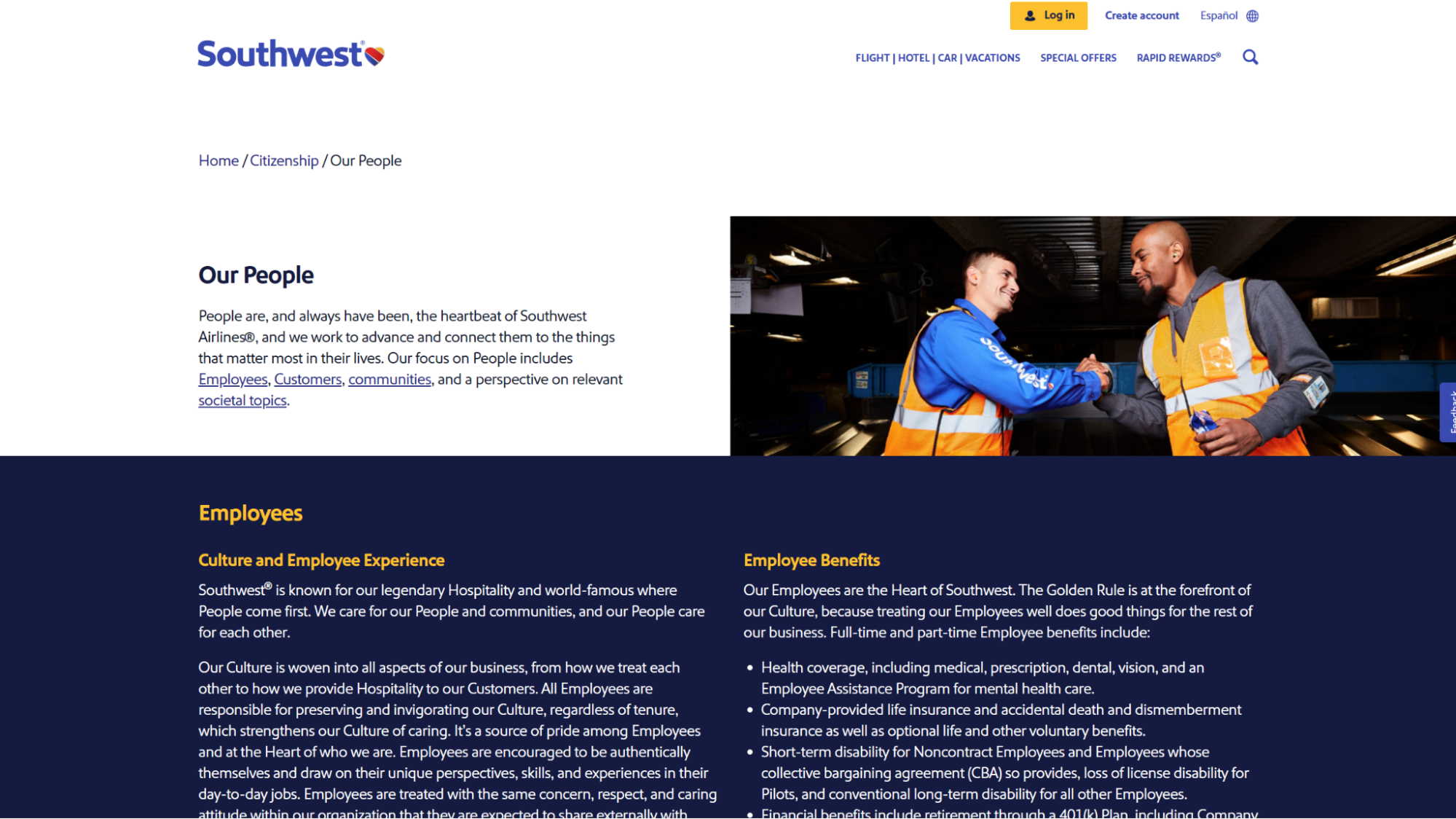Engaged employees are irreplaceable assets, particularly in fluctuating business landscapes. These individuals are committed contributors who drive your organization’s success.
Yet, employee engagement is a glaring issue for companies worldwide, and workforce stress is at a record high, with 44% of surveyed workers saying they experienced it as recently as the day prior.
Unsurprisingly, over 50% of employees are now quiet quitting, and 85% of them citing the following as changes they would make at their current employer:
- Engagement or culture (41%)
- Pay and benefits (28%)
- Well-being (16%)
Given the increasing prominence of engagement in the workplace, developing dedicated personnel should be a priority. To help you tackle this undertaking and build a loyal following, we’ll dive into the intricacies of employee engagement, discussing its advantages, challenges, and effective strategies to cultivate it.
What is employee engagement?
More than mere job satisfaction, employee engagement encapsulates a psychological state where someone is invested in their organization’s goals and values and is willing to put in the time and energy to contribute to its success. It’s thus dependent on how closely employees align with the company’s mission and feel valued.
These key aspects push people to actively work towards achieving the organization’s objectives. When employee engagement reaches an exceptional level (referred to as positive engagement), individuals feel a sense of fulfillment and well-being from their work.
Why is employee engagement important?
Most businesses understand the benefit of creating a positive workplace and so provide solutions like flexible hours, on-the-job perks, and company outings.
While happy employees differ from engaged ones, many organizations overlook their distinctions and how positive engagement maintains a healthy workforce. For instance, indicators of engaged staff include showing initiative and participating in workplace activities.
To give you a better appreciation of employee engagement, here’s a breakdown of its various advantages.
Enhanced productivity and profitability
People invested in your company are more willing to help further its goals and even go the extra mile. Compared to disengaged peers, individuals who are focused on and passionate about their work can deliver more favorable business outcomes.
In fact, Gallup found it significantly affects organizational results, with work units in the top quartile outperforming those in the bottom by 21% in productivity and 22% in profitability.
Lower employee turnover and costs
When someone feels needed and valued in their role, they’re more satisfied, driven, and thus less likely to quit. Research even indicates that higher engagement can result in significantly lower turnover rates:
- For organizations with over 40% annual turnover, achieving stellar engagement levels resulted in 18% less turnover.
- For companies with less than 40% yearly turnover, attaining excellent levels of engagement reduced their turnover by an astounding 43%.
That reduced churn results in major savings, as voluntary turnover costs U.S. businesses an estimated $1 trillion each year, while replacing an individual can net you half to double their annual salary.
Improved communication and employee initiative
When workers feel heard, they won’t hesitate to voice their opinions, provide input, or offer feedback. The same goes for personnel who feel appreciated, as they’re more likely to pitch in, contribute to a project, and help their colleagues.
That positivity encourages clear communication and more opportunities for active collaboration, which enable workers to engage on an individual level.
Although not everyone has the freedom to take initiative, positive engagement means your workers are fully committed to their role and adopt a more proactive approach to delivering results.
More room for innovation
As mentioned, an engaged workforce is more open to communication and collaboration among individuals. When multiple employees dedicate themselves to achieving a shared outcome, their combined perspectives can generate creative solutions for achieving it.
Enhanced customer satisfaction
Engaged employees are more invested in their roles and so bring more dedication and energy to their jobs. This improves how they interact as well as the quality of service they deliver to customers. An overwhelming 92% of executives agree with that correlation, saying organizations with highly engaged employees have happy customers.
Consistently positive customer experiences help secure not only their loyalty but also an outstanding company reputation.
A healthier workforce
Efforts to improve employee engagement involve promoting open communication, devising wellness initiatives, providing excellent compensation and benefits, and offering learning and development opportunities. An individual’s relationships with their team, manager, and colleagues are also major contributors to how they feel about their job, underscoring the importance of healthy workplace relations and open communication.
Gallup also found engagement to be 3.8 times more influential on employee stress than location, whether it be remote or on-site, which provides a clear indication of its strong impact on overall worker well-being.
What hinders employee engagement?
Several obstacles can impede employee engagement. It’s essential to identify and address those barriers in your company to foster a more motivated and productive workforce.
Poor communication
Effective communication is a cornerstone of any successful organization. If your channels are unclear, inconsistent, or simply non-existent, employees will feel disconnected from your company.
It can also confuse them about your company’s goals, leave them uninformed on important decisions, and cause them to feel undervalued. That can then result in personnel disengaging.
Lack of recognition
Validation is a human need, and when employees feel their efforts go unnoticed or unappreciated, their motivation and morale suffer, pushing them to leave. In fact, 54% of employees cited not feeling valued by their organization as their reason for quitting, ranking just ahead of their managers (52%) and missing a sense of belonging at work (51%).
You can address those issues and foster a culture of appreciation by recognizing and rewarding them for their hard work, contributions, and achievements.
Limited growth opportunities
Employees remain engaged and motivated when they see a clear path for advancement. When there’s a visible lack of opportunities for learning and development, they may start to feel stagnant and then disengage. In fact, career development has consistently been the top reason workers quit.
Providing mentorship, training programs, and chances to further their careers can cultivate engagement and convince your personnel to invest in a future with your organization.
Micromanagement
Managers who excessively control and scrutinize every aspect of their employees’ work leave little room for autonomy, creativity, or initiative. This suffocating style can easily erode morale, motivation, and productivity, as workers may feel they aren’t trusted to do their jobs well.
Research has even found that 70% percent of micromanaged workers consider quitting, while 30% actually follow through with the threat.
Rather than resorting to micromanagement, focus on setting clear expectations and goals, then provide support as your employees work towards them. This empowers them to take ownership of their work while securing their engagement.
Inadequate resources
When employees are denied access to the tools and support they need to thrive, engagement will obviously take a hit. Whether it be due to obsolete technology, insufficient training, or understaffed teams, a lack of resources creates unnecessary obstacles that hinder productivity and give rise to frustrations among your workforce.
To avoid these problems, it’s essential you invest in equipment and learning opportunities that show your commitment to employee success and well-being.
Cultural mismatches
Your organization’s culture significantly shapes your employees’ attitudes, behaviors, and overall experience. If it fails to align with their personalities and values, they won’t engage. It may even drive away new hires, as demonstrated by 28% of workers who cited culture as the reason they left a company within the first 90 days.
When issues like poor diversity and inclusion, workplace toxicity, or conflicting values arise, workers feel disconnected, then disengage. It’s your responsibility to cultivate a positive culture that confronts these types of challenges.
How to improve employee engagement
We’ve explained why positive engagement is essential for reducing turnover, as well as driving workforce productivity and company success. The next step is to overcome the variables that hinder it.
Create stellar onboarding experiences
Employee onboarding serves to create a favorable impression among new hires and can even start as early as recruitment to attract potential workers. Whenever a fresh employee enters your enterprise, they should immediately perceive an engaging atmosphere.
As soon as the first interview, work to build a trusting relationship and lay the groundwork to facilitate the candidate’s seamless transition into your organization. Some best practices you should utilize include:
- Structured induction processes
- Introducing new hires to their superiors and team members
- Establishing buddy systems where managers or experienced employees act as mentors
- Monthly check-ins
- Ongoing feedback and evaluation
Conduct stay interviews
Stay interviews are excellent avenues for building trust, which is a key pillar for employee engagement and retention.
This type of meeting is typically held one-on-one and aims to uncover what you can do to make working in your organization better for employees. You can use them to complement weekend and evaluation interviews as well.
To make individuals feel more comfortable and open, it’s better to conduct stay interviews in an informal setting. Your primary goal is to gain the employee’s perspective, particularly those working on the front lines.
Compare their answers to those of managers to gain a clearer picture of any issues workers have with your organization’s culture, processes, and their colleagues. You can then pinpoint which variables are impeding employee engagement and work to resolve them.
The advantage of a stay interview is that it lets you identify and tackle problems before they reach a critical point, leaving you enough breathing room to create plans of action that remedy the situation.
Tailor individual development plans
Every employee has unique needs and professional goals, and their progress impacts your company’s objectives in turn; the more engaged they are, the greater their desire to develop their skills and contribute more.
To accommodate your workers’ aspirations and enhance their engagement, craft personalized development plans for them. Before pursuing this though, make sure to take the following aspects into account:
- Preparation for this project can also be an effective channel for communication between you and your employees.
- Individual development plans shouldn’t only consider the interests of the best employees but disengaged ones as well. However, you must first identify whether the lack of growth opportunities is the reason for their disengagement.
- Depending on the individual’s needs, the development plan could include various refresher courses, training, rotations, or coaching. Use your findings to invest in the best opportunities for your personnel’s professional growth.
Let employees participate in key projects
Purpose-driven work is a strong source of engagement, as employees involved in meaningful endeavors are found to be more invested than those who aren’t. Most companies with high levels of engagement include personnel in projects that are vital to their shared mission.
Having employees participate in meaningful plans gives their work a sense of significance and pushes them to perform to the best of their abilities. While it’s impossible to assign everyone to your most valuable clients, assembling a team of your best talent can also motivate the rest.
It doesn’t necessarily have to be major projects; highly engaged employees can also be given the opportunity to attend international conferences, professional events, etc.
Set up stimulating physical workspaces
Redesigning your organization’s physical space can drive engagement and productivity. Although it won’t be as helpful for remote employees, it can significantly affect those who work on-site. Since they come into the workplace almost every day, their environment will play a significant role in maintaining their mental and emotional states, as well as performance.
For instance, you can divide the overall space into various zones: One can be for focused work, another for team brainstorming, and a third for recreation. Creating areas dedicated to similar types of activities will be more conducive, as everyone using them will have like mindsets.
You should give the recreational area extra attention though, as not many companies are willing to provide one. Since they offer opportunities to relax mentally and physically, your employees can return to work rejuvenated.
Encourage open communication
We previously mentioned how poor communication hinders employee engagement. To ensure its effectiveness, emphasize clarity and transparency. This helps nurture trust and prevents confusion among your organization’s leaders, managers, and employees.
Establish internal communication strategies and channels. All members of your company must be willing and able to discuss their worries and problems with superiors without fear of reprisal.
Also, set clear goals linked to your employees’ day-to-day work, relay information on decisions that affect specific roles, avoid using jargon, and convey information in a way that’s easy to understand.
This can be particularly useful during major transitions as well — think of situations that require any form of organizational development. During such periods, worker routines are disrupted and result in stress or resistance to change.
By practicing openness and keeping employees in the loop, you can easily quell issues before they reach a boiling point.
Recognize and reward achievements
We mentioned how unacknowledged contributions can chip away at employee motivation and morale. You can easily avoid this problem by properly recognizing and rewarding accomplishments, whether it be individuals or teams.
Although this can be challenging for businesses with limited budgets, the incentives don’t have to be grandiose. Actions like verbal praise, public recognition, chances to work on desired projects, or tangible rewards such as small bonuses or promotions reinforce positive behaviors and support a culture of appreciation.
Remember, employees who feel respected and appreciated are more likely to go the extra mile and remain passionate about your company’s goals and objectives.
Provide chances for learning and development
Most people have a career path in mind and don’t want to sit in the same role for 10 years. Investing in your employees’ professional aspirations shows you’re committed to their long-term success.
By offering upskilling and reskilling opportunities, you open more doors for employees, as well as keep them engaged and loyal. Whether it be through training programs, workshops, or mentoring opportunities, expanding their capabilities expands growth avenues that can make them feel valued and motivated.
Encourage work-life balance
Burnout, stress, and well-being are workplace issues that heavily obstruct employee engagement. They often stem from cutthroat management and heavy workloads that push people beyond their limits.
Promoting work-life balance lets you protect workers from such issues. It’ll take some time to fully integrate this initiative into your organization’s culture, but to help smooth the path forward, be sure to:
- Inspire personnel to prioritize self-care
- Allow them to set boundaries between work and their personal lives
- Let them take necessary breaks
- Offer flexible work arrangements
- Give them the freedom to request lighter workloads when needed
- Provide various wellness resources
Also, keep in mind that each individual has unique responsibilities and circumstances outside of work. Broad initiatives therefore won’t resonate with everyone, so tailor yours according to an employee’s specific needs.
Hold leadership accountable
As previously discussed, culture plays a critical role in employee engagement. Another aspect you must consider, though, is how leaders influence it. Notably, 76% of U.S. workers say their superior sets the culture, but 36% also feel their manager doesn’t know how to lead a team.
Since they set the tone and are responsible for maintaining the loyalty and well-being of your staff, hold leadership accountable for the environment they create. Make sure they adopt more efficient practices and interact with their teams as well.
This applies to you too: Demonstrate and nurture positive engagement by taking initiative and learning how people across all organizational levels are doing. Also, be open to employees approaching you for guidance, as it shows you care about their welfare.
Give employees autonomy
Micromanagement is a suffocating practice that can push workers to leave. The opposite, meanwhile, can be empowering.
Giving employees the freedom and authority to make decisions, as it establishes a sense of ownership over work outcomes. It also shows that you trust personnel to perform independently, allowing them to grab opportunities that showcase their skills and creativity.
Solicit actionable feedback
Since your employees are the ones working on the ground, they’re your best source of engagement insights. Establish feedback mechanisms that allow them to talk freely about their experiences, voice their opinions, and provide suggestions for improving their working conditions. This can go a long way, especially with the amount of people leaving organizations due to employee input being handled terribly:
- In fact, 41% have left their jobs because they didn’t feel listened to
- Meanwhile, 37% quit because feedback wasn’t taken seriously in the company
Employee engagement survey questions to ask
To gather high-quality, actionable information, we suggest utilizing an employee engagement survey. This tool lets you identify areas that enable or restrict engagement, then formulate plans that address them.
If you have the time and resources, we recommend conducting the questionnaire one-on-one or in a small group (five people or less) setting as well. As you develop a comprehensive survey, here are some essential questions you should include.
Question 1: Take me through your morning routine
Learning how people start their day lets you understand their habits and mindset as they prepare for work.
Asking what they think or feel during their morning routines also reveals how individuals feel about their jobs in general (mainly, whether or not they look forward to it).
Question 2: How often do you feel like coming to work? How about the number of days that you don’t?
This lets you estimate how motivated employees are most days. If their answers lean towards being disengaged, try to identify what’s impeding their enthusiasm.
Question 3: Do you work with people that inspire you?
We previously mentioned how one’s environment strongly impacts their engagement — this includes coworkers as well. By assessing how much colleagues inspire one another, you can determine:
- Overall workforce excellence
- Your staff’s interpersonal relationships
- Team dynamics
Question 4: Do you feel your managers and peers support you?
A supportive work environment filled with collaboration and harmonious relationships is essential to nurture engagement. Learning how employees perceive help and guidance from their coworkers can reveal the presence or lack of trust and teamwork.
Question 5: How often do you tell people where you work? Do you feel proud when you tell them?
This question lets you gauge how employees see your organization’s culture, branding, and operations.
Their pride and enthusiasm in sharing where they work reflects how connected to and satisfied they are with your company. Not to mention, their word-of-mouth advertising can greatly support your employer branding.
Question 6: Are the tools and resources we provide enough for you to do your best work?
When employees have access to tools and resources that allow them to flourish in their roles, it secures their productivity and engagement.
By asking this question, you can easily uncover gaps or deficiencies in resource allocation, then make adjustments that support employee needs and optimize their performance.
Question 7: What do you think of the company’s culture? Does its mission and values resonate with you?
This basic inquiry can reveal any cultural misalignments. If an employee’s personality and principles don’t match the organization’s, they’ll likely find it difficult to contribute to your objectives.
If they connect with your company’s purpose, however, they’ll be more committed to making a difference.
Question 8: Do you question the validity of the information you’re provided? If yes, how often?
When employees doubt the legitimacy of the information they receive in the workplace, it indicates a glaring lack of trust and transparency, which isn’t conducive for collaboration.
Depending on their answers, you may want to reevaluate how your organization communicates. The goal is to:
- Align employees across all levels
- Hold discussions openly
- Build trust
- Be easy to understand
Question 9: Do you feel valued for the work you produce?
This question gauges if your recognition and rewards systems make employees feel appreciated, satisfied, and engaged. If workers express feeling undervalued, take swift action to remedy the situation.
Question 10: Do we offer you ample opportunities to learn and advance your career?
Like we discussed earlier, most people don’t want to stay at the same level for their entire careers. Honest answers to this question will thus help you identify employees who are dissatisfied with the investment (or lack thereof) in their professional development.
Based on what they say, you can easily discern whether workers would appreciate more learning, coaching, or advanced roles.
Question 11: Are you allowed to make decisions freely in your role?
Micromanagement prevents employees from fully engaging in their work, as every move they make is heavily scrutinized by a smothering superior. The opposite, meanwhile, gives your personnel full ownership and accountability over results, which builds confidence.
By assessing their perceptions of decision-making freedom, you can determine whether there’s a need to improve authority delegation or support.
Question 12: Do you know how your role contributes to the organization’s success? Could you describe its value to a stranger?
A deep understanding of how their job fits within the larger context of the company’s goals indicates an employee’s level of engagement, as it aligns workers with your organization’s mission and helps drive their sense of purpose on a day-to-day basis.
When people fail to recognize it however, that points to a deficiency in areas like onboarding, communication, and leadership.
Question 13: Do you struggle with work-life balance?
This inquiry can hone in on sources of workplace stress and other job-related problems that spill over into your employees’ lives outside of work. These imbalances — such as excessive workloads, time away from family and friends, etc. — can lead to burnout and negatively impact your employees’ well-being.
Your workers’ answers will pinpoint any stressors so you can then create and launch initiatives that address them.
Question 14: Do you have any suggestions for improving employee engagement?
Your survey is meant to uncover variables that hinder engagement amongst employees. Since they’re your best source of insights, the most appropriate way to end is to ask what they think should be done to address any stated problems.
Doing so not only shows you value their opinions but also demonstrates your commitment to their success and well-being. It sends a message that you’re actively creating an engaging and supportive environment that enables them to thrive.
Inspiring companies that prioritize employee engagement
By now, you should have a clear idea of what positive engagement can do for your organization, and how to nurture it throughout your workforce. To jump-start your efforts, here are some companies whose initiatives can serve as inspiring examples.

Google is a purpose-driven tech giant known for their unique, employee-centric culture. The company invests heavily in engagement initiatives that keep their people productive, happy, and satisfied.
The 80/20 rule
Their 80/20 rule, for example, allows Google’s staff to take ownership of their work, as well as their growth and development. It requires them to commit 80% of their time to core projects, while the remaining 20% can be spent on innovation.
Although creativity can’t be forced, this rule gives Google employees the freedom to work on projects they’re passionate about so innovation can occur organically.
Comprehensive employee benefits
Google offers a wide array of benefits that promote various aspects of employee wellness, ranging from health to personal development. Others include:
- Medical, dental, and vision insurance
- Mental health assistance programs
- Bonuses and equity refresh opportunities
- Student loan reimbursements
- Various forms of paid time off (PTO)
- Hybrid and remote work opportunities
- Family support and care perks
Diversity and inclusion
A diverse and inclusive workforce is critical to cultivate a supportive environment. Google has launched various initiatives aimed at improving their recruiting, hiring, and work practice issues, such as:
- Disability inclusion
- Gender equity
- LGBTQIA+ inclusion
- Racial equity
- Veteran inclusion
Southwest Airlines

As part of their commitment to corporate citizenship,Southwest Airlines built their ethos around a culture of caring that heavily prioritizes both their personnel and customers.
Culture and benefits
As exemplified by Southwest’s Colleen C. Barrett Institute, the company strongly encourages taking care of one’s self to better care for others.
Wellness is also deeply incorporated into the airline’s corporate culture, as demonstrated through the comprehensive benefits given to Southwest’s full-time and part-time employees:
- Travel privileges, employee discount program, and Southwest Airlines Gratitude (SWAG) Points
- 401(k), ProfitSharing, and employee stock purchase plans
- Various medical, disability, and life coverages
- Clear Skies Employee Assistance Program (EAP) provides mental health care for employees and their family members
- PTO
- And more
Freedom of association and collective bargaining
In an effort to nurture trust and understanding with their personnel, Southwest Airlines allowed the majority of their workforce to form unions for representation, enabling the negotiation of labor agreements that achieve win-win situations for all involved parties.
Career mobility
By giving employees control over their career trajectories, Southwest Airlines is able to match their workers’ aspirations, as well as keep them engaged and satisfied. The company provides staff various learning and growth opportunities, ranging from in-person classes to mentorship programs and more — all of which fit their professional and lifestyle goals.
Southwest’s Career Mobility Center even allows employees to prepare for internal career opportunities by offering resources such as individual career advising sessions, interview preparation, and virtual days in the field.
Cisco

Cisco offers a large portfolio of technological solutions for networking, security, collaboration, cloud management, and the like. Their driving force, however, is their mission to connect industries with communities, which gives rise to a unique company culture.
Ranking third in the World’s Best Workplaces™ of 2023, Cisco offers employees more than just job opportunities; their various engagement strategies make working for the company worthwhile.
Annual shutdowns
Cisco has made their yearly shutdowns a core component of their regular operations. Originally, these were designed to be a key part of their environmental efforts, mainly to reduce their carbon footprint. However, this initiative has greatly benefited employees as well.
The annual shutdowns typically take place at the end of the year and last from 10 to 12 days so Cisco’s workers enjoy ample time to recharge and spend the holidays with family and friends. As a result, staff are able to come back to work with a renewed motivation.
Environmental, social, and governance (ESG)
Cisco is a purpose-driven company that executes many ESG initiatives. The company’s efforts encompass various societal issues, including:
- Sustainability: Transitioning to clean energy, progressing to a regenerative circular model, and investing in resilient ecosystems
- Supply chain: Responsible and sustainable material sourcing, as well as strict sustainability requirements
- Social impact: Grants in areas such as crisis response, climate impact and regeneration, learning and digital skills development, and economic empowerment
- Digital access: Country Digital Acceleration (CDA) program, Cisco Networking Academy, training military veterans for new careers, etc.
- Diversity, equity, and inclusion: Anti-discrimination training, supporting community partnerships, legislation, advocacy, and more
- Philanthropy: Grant programs for nonprofits and underserved communities
- Security and privacy: Data, system, and network protection, as well as accountable processing of personal information
- Public policy: Governmental affairs team engages with governments and prioritizes policies that support Cisco, their partners, and their customers
Wide range of benefits and perks
Besides competitive compensation, Cisco offers benefits and perks that ensure employee wellness across different areas, including:
- Financial wellness: Employee stock purchase program, tuition reimbursement, annual bonuses
- Recognition and rewards: Connected recognition, employee discount programs, flexible work practices, PTO
- Career growth and development: Permanent or temporary job swapping, time swapping, work on projects across various business groups, etc.
- Health and well-being: Health and fitness centers, support for parents, second opinions from expert physicians, healthcare coverage, insurance, and more
- Paid volunteering opportunities: 10 paid days per year to volunteer for causes employees support
Wrapping up — Engaged employees drive organizational success
In competitive business landscapes, nurturing employee engagement is a strategic necessity. Prioritizing your workforce’s well-being, growth, and satisfaction not only cultivates a positive work environment but also supports your business’s sustainable success.
There are many ways to improve employee engagement, but what works best will be unique to your business model. When developing your own initiatives, remember that:
- Engagement can start as early as recruitment.
- Employee engagement is a two-way street. If you want your people to go above and beyond, you must provide more than just their basic needs.
- Give your workers the freedom to make decisions and be held accountable for their results.
- Engagement efforts can influence aspects beyond the work setting, like how lowering workloads allows personnel to spend more time with their families and friends.
By making employee engagement a cornerstone of your organizational strategy, you’ll see your company flourish and weather the challenges of today’s dynamic industries.




